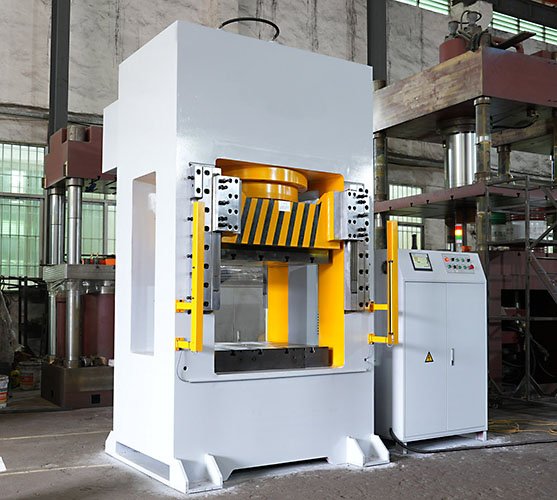The transmission shaft fork is an important part of the vehicle power system, which is used to transmit the driving force of the vehicle operation. The performance of the drive shaft fork directly affects the safety of the car, and it is difficult to meet the strength requirements of conventional processing methods. Shuntec Press has designed and built a multi-directional forging hydraulic press for the drive shaft fork. It adopts the three-beam four-column structure or the gib-guided frame structure. Using the forging process, the processed drive shaft fork has good mechanical properties, wear resistance, and long service life.


The multi-directional forging of the transmission shaft fork is performed by the upper die of the universal joint fork installed on the slider of the hydraulic press. Under the vertical downward power of the equipment, pressure is applied to the heated round blank which is placed on the lower die of the universal joint fork installed on the workbench. And then, the universal joint fork blank is obtained.
According to the material, specification, and process of the transmission shaft fork, Shuntec can customize the production of 400 tons, 500 tons, 630 tons, 800 tons, 1000 tons, 1500 tons, 2000 tons, and other tonnages of the forging hydraulic press. Forging times per minute can reach 80 to 120 times. The movements of hydraulic system components are sensitive and fast. The hydraulic press controls the pressing amount and stroke of the movable beam through the computer. Under the precision-controlled forging process, the dimensional accuracy of the produced blank can reach ±1~2mm.
By using the multi-directional forging hydraulic press, the material or blanks need to be heated before forging, which can improve the plasticity of the metal and reduce the deformation resistance. That is, to totally increase the plasticity of the metal so that the metal is easy to flow and form and to obtain a good structure and mechanical properties after forging. The forging temperature range of a metal refers to a temperature range between the starting forging temperature and the metal forging temperature. The principle of determining the forging temperature is to ensure that the metal has high plasticity and small deformation resistance within the forging temperature range.

